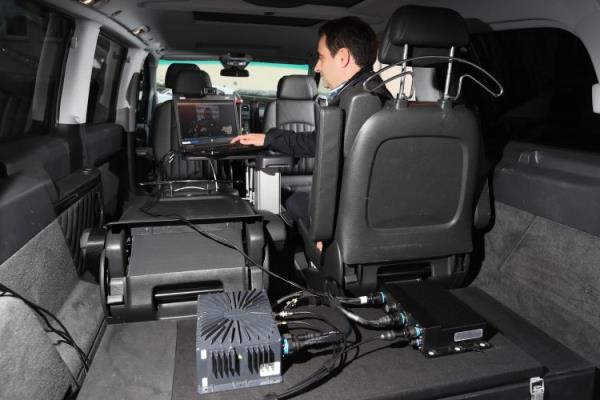05 December 2016
European Aviation Network testing at Nokia Stuttgart with onboard equipment.
The European Aviation Network (EAN) has achieved a major milestone following a programme of test flights that were recently carried out in the UK.
Planned for introduction in mid-2017, EAN is the world’s first integrated satellite and air-to-ground network dedicated to providing a true in-flight broadband experience for the European aviation industry and for passengers travelling across the continent.
The tests flights were carried out by satellite operator Inmarsat and Deutsche Telekom, together with their technology partners Nokia and Thales.
The aim was to evaluate the performance of the EAN system including the onboard equipment being provided by Thales and the ground network provided by Deutsche Telekom and Nokia.
As a precursor to the series of test flights, Deutsche Telekom and Nokia jointly achieved the first EAN live over-the-air connection in Nokia’s Stuttgart lab.
All components of the LTE ground network were thoroughly tested and validated. The first live connection in the field was accomplished in a broadband video conference with both parties connected via the dedicated EAN LTE mobile network.
The flight trial tested the performance of the onboard equipment being provided by Thales and the ground network provided by Deutsche Telekom and Nokia.
Tests were performed to see if the network could successfully attach to the ground system. It’s claimed this was successfully done at all four test sites located in southwest England.
The companies says the systems performed multiple successful handovers between sectors and cell towers, and maintained a stable connection.
The transfer of data to and from the aircraft was also tested. Leo Mondale, president of aviation at Inmarsat, said: “The actual performance and quality of the in-flight datalink exceeds design expectations and is truly game changing for European airlines.”
The outcomes for this early flight trial have provided valuable data for the development teams in preparation for the EAN’s launch next year.
Making the connection
The EAN is said to be unique in terms of the capacity and quality of broadband internet service it brings to the dense European aviation routes.
The equipment it uses is claimed to be in a very small and lightweight form factor that typical broadband satellite based solutions cannot offer.
The ground network will use 4G mobile infrastructure combined with satellite frequencies provided by Inmarsat. These are in the S-band (2-4GHz) spectrum that is is typically used for weather radar, surface ship radar, and some communication satellites (especially those used by NASA for communication with the ISS).
To achieve EAN’s live connection of the LTE ground network, Deutsche Telekom and Nokia have adapted Nokia’s LTE base stations and remote radio heads to the S-band frequency that has been provided by Inmarsat for the EAN, and built a specific base station antenna to cover the sky.
An EAN antenna installed under a plane’s body..jpg)
Nokia will manage the operations for the network from its global delivery centre in Romania. In addition to the live network, Nokia and Deutsche Telekom will setup a full end-to-end ground network reference system in Stuttgart. This will include all components and integrated on-board equipment from Thales to prepare for technical challenges, such as compensation of the Doppler effect due to high aircraft speeds, for example.
Since EAN’s initial announcement in September 2015, Deutsche Telekom and Nokia say they have made steady progress and are on track to deliver the ground component of the project. This includes the rollout of the approximately 300 antenna sites needed across Europe and connecting the network live over-the-air.
In parallel, Inmarsat and Thales are advancing with implementing the satellite communication for the EAN, having completed construction and associated sub-system tests of the satellite earlier this year.










